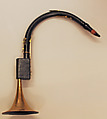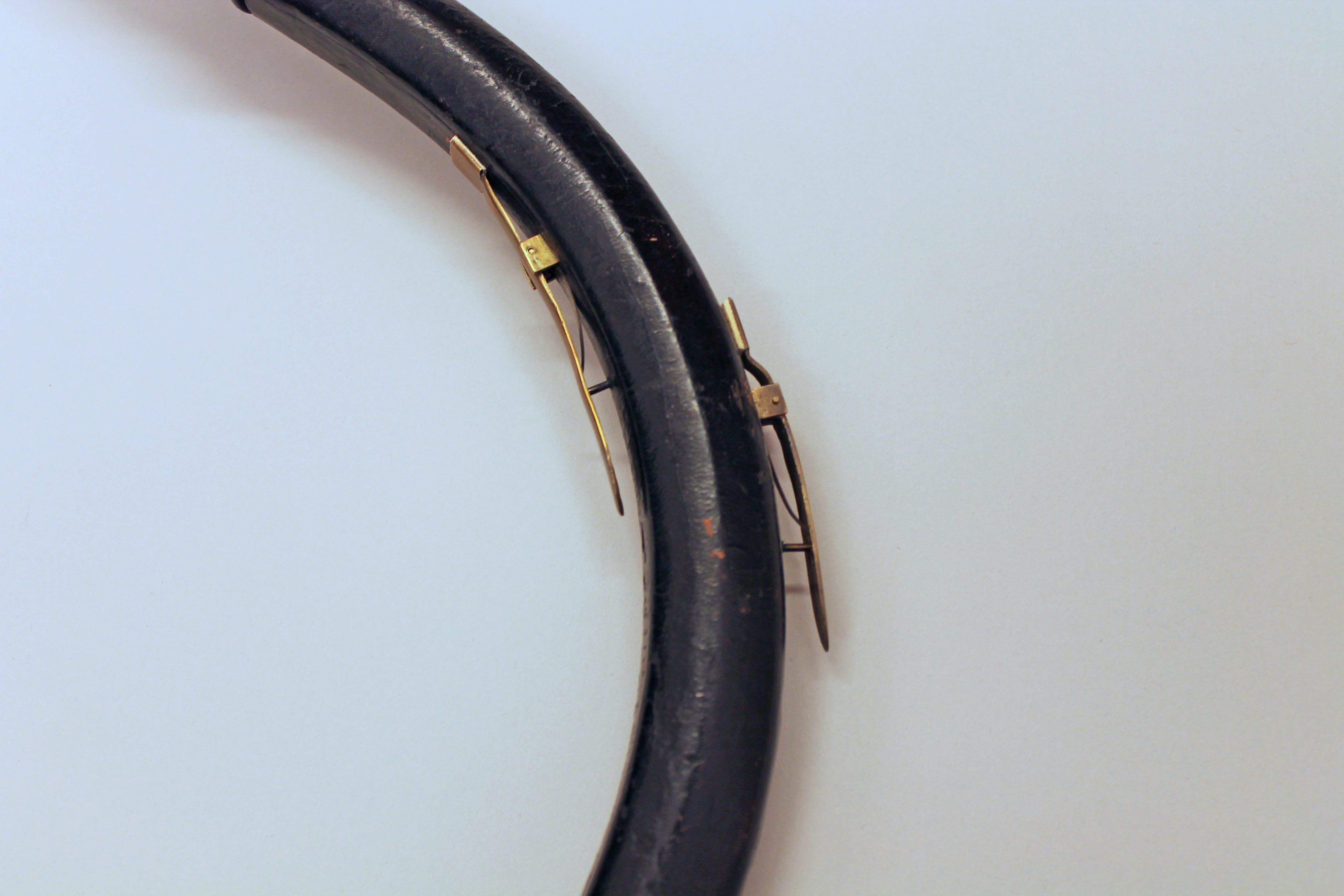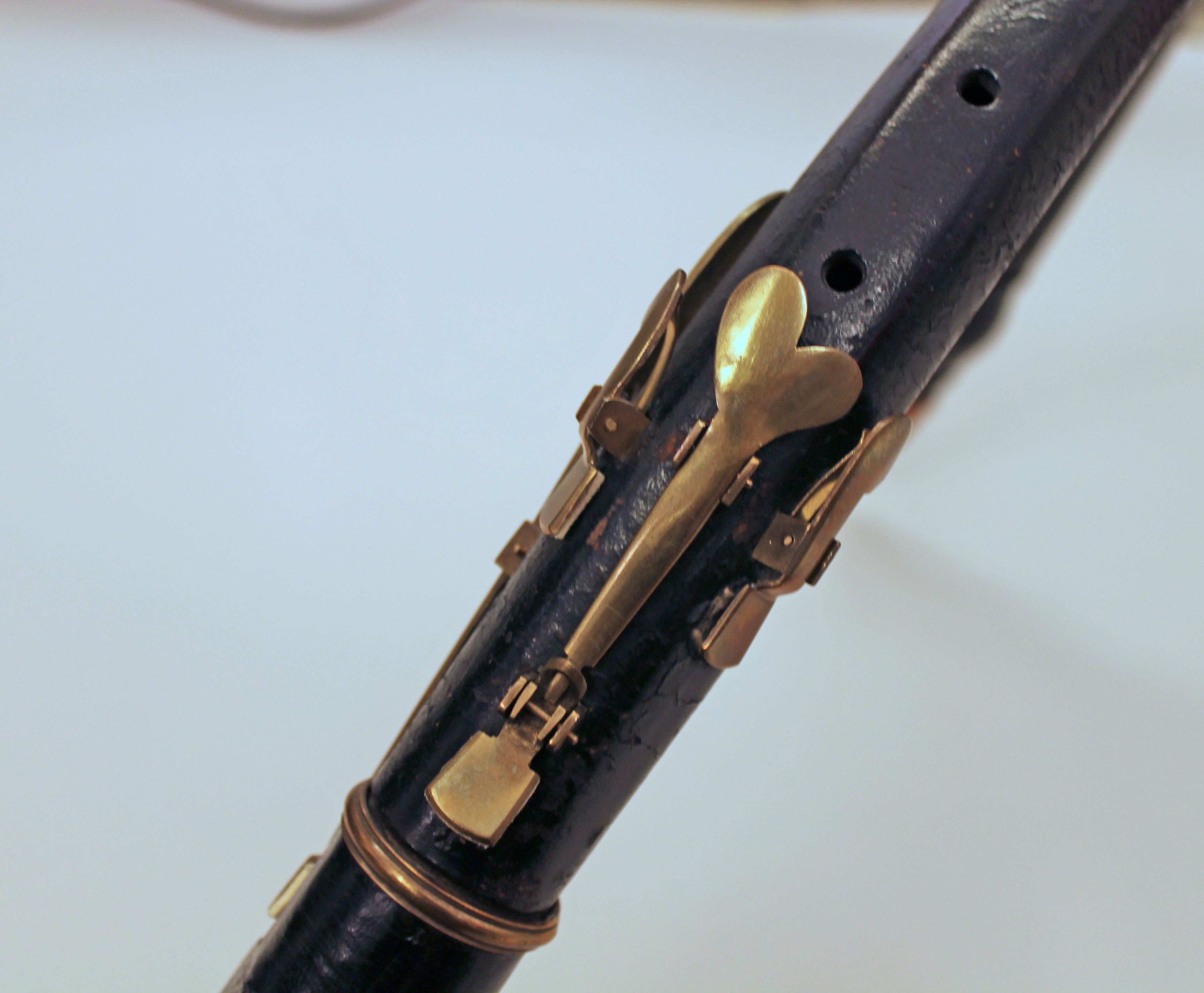Basset Horn in F
Not on view
This is the original type of basset horn, which was formed like the oboe da caccia . Saw cuts were incised in the drilled straight tube at one side so that the tube could be bent. Afterward the tube was covered with leather.
Overall size: 645
Bore: 13.0 (at upper tenon); 14.8 beyond tenon.
Technical description: Wood covered with leather, brass keywork and bell. Four pieces: mouthpiece, barrel, bent one-piece body, book and widely flaring brass bell. Ebony mouthpiece and dark stained wooden barrel probably not belonging. To adjust the tone holes of the bass instrument to the hands of the player the instrument is sickle-shaped. To get this shape, saw cuts were incised in the drilled straight tube at one side so that the tube could be bent. Afterwards the tube had to be covered with leather in order to make it air-tight. Body rather octagonal than round. The keys are mounted in saddles which are also carrying the leaf springs. The springs are neither attached to the wood nor to the keys, but to the saddles. Key levers featured with guide pins (speaker lever, throat A lever and the F♯3/C♯5 lever). A former twin hole (B♮3, B♭3) for the index finger of the upper hand has been blocked and redrilled. A brass ring tops the lead to the box. Extension to low C, no diatonic extension. The arrangement of the keys enables the player to choose hand positions freely (either-handed). G♯3/E♭5 is a duplicate key to be opened with either L4 or R4. F3/C5 has duplicate levers (butterfly-touch) for the same purpose. Brass bell coloured from inside.
L/R0: T; speaker.
L/R 1: T; throat A♮.
L/R 2: T.
L/R 3: T.
L/R 0: E3/B♮4; F♯3/C♯5; C3.
L/R 1: T.
L/R 2: T.
L/R 3: T.
L/R 4: F3/C5; G♯3/E♭5.
Keyhead type: flat square.
Keymount type: screwed-in saddles with push pins.
No inscriptions.
Playing accessories: one reed and a cord.
(Heike Fricke, 2014)
This image cannot be enlarged, viewed at full screen, or downloaded.
This artwork is meant to be viewed from right to left. Scroll left to view more.




